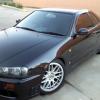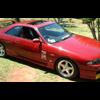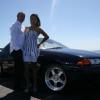Power Loss On Downshifts, Bouncing Idle And Slight Hesitation At Specific Rev Point -R34Gtt
Announcements
-
Similar Content
-
Latest Posts
-
look up "kota the yota" on youtube he runs an export business to the us and specialises in r34's
-
I understand that the R34 ECU can be sensitive to what is going on wrt the coilpacks/loom. You'd be well advised to put a Consult reader onto the diagnostic port and read the codes. The one(s) in the ECU will be the ones most likely to tell you what's going on. The TCS light will be a secondary effect.
-
I thought about a floating dash head unit in my 33 but I decided against as I thought it would just get in the way of aggressive gear changes and when mounted that low you have to look away from the road (vs glancing across like modern car screen positions). I went with a Sony wireless CarPlay head unit: For the amp and sub, I made up a panel to mount to the side of the boot: the sub is a small kicker tube sub that fits above the fuel hat (you have to relocate the HICAS ECU).
-
Looks like I need a spectrometer as that says there are 4 variants. Thabkyou for your help
-
R34 GTT and stock ECU. I have a link ECU waiting to be installed.
-






Recommended Posts
Create an account or sign in to comment
You need to be a member in order to leave a comment
Create an account
Sign up for a new account in our community. It's easy!
Register a new accountSign in
Already have an account? Sign in here.
Sign In Now